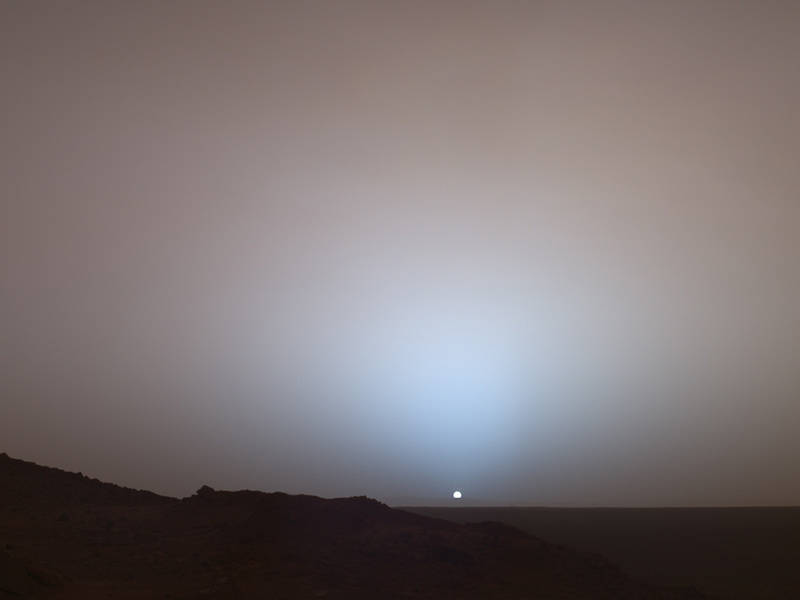If you were to picture the Sun, what color would you give it? Unless you went with an outlandish color like pink (which can’t come from one wavelength of light), the answer could be right, as the color of the Sun changes with location. It might be red-orange at sunset on Earth, but those sunsets and sunrises are blue on Mars. Yes, we can hear you groan at this cop-out answer. You want to know what color the Sun reaaaaallly is.
Is the Sun actually yellow?
So here it is. The Sun is white, and it is white for two reasons. One has to to do with the light it emits and the other has to do with the way our eyes work. The sun emits light across the entire electromagnetic spectrum, from radio waves to gamma rays. But the Sun, like any other object, gives off more light based on its temperature. And for stars that tends to be in what we call visible light. This distribution is called a spectrum, and the emission of the Sun is very strong across those wavelengths.

Sunset on Mars. Definitely blue.
Image credit: NASA/JPL/Texas A&M/Cornell
If the Sun were a perfect emitter, its peak would be around 500 nanometers. That is in the green portion of the visible spectrum. But the Sun is not green because it is also emitting a lot of blue, yellow, orange, and red, and the combined light ends up being what we call white light.
Why are there no green stars?
You might wonder if the slight extra green shouldn’t give it at least a smidge of a green tint. You could say sure, the Sun is white but it should have an emerald quality to it, a verdant je ne sais quoi. And now another realization might dawn on you. You have heard of red stars and blue stars and yellow stars – the Sun is a yellow star after all. But why are there no green stars or purple stars?
And that’s where our vision comes into play. Humans see light using specialized cells called rods and cones. The cones are the ones that see color and there are three types: L, M, or S, named for their ability to see long, medium, or short wavelengths. Our eye is not a perfect machine and these cones do not react to all the colors equally. We see green light well because it not only triggers M cones but also some of the L and S, due to an overlap in sensitivities.
And crucial to the lack of green stars are the M cones. If something triggers both the M and the L, even though it is factually closer to green light, it might appear yellow. A red star or a blue-white star might be more unequivocally identified. Purple stars are equally unlikely due to the fact that our eyes are not that sensitive to purple, so we’ll see them as blue.
There you have it. The Sun is white, and if we were to give it a subtle hue it would be yellow – but only because of how our eyes work and how the sky filters it. It was never yellow like the Teletubbies Sun!
Source Link: What Color Is The Sun? A Simple Question With Complex Answers